Types and varieties of orchids
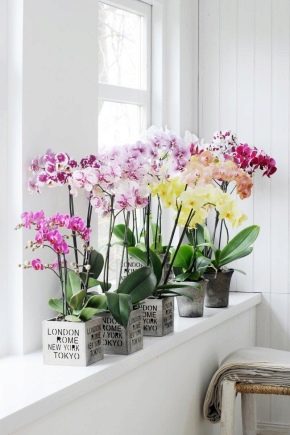
Orchids have become almost legendary flowers in indoor culture. There are a great many varieties of them, even without taking into account hybrids. And therefore, the study of their classification and the characteristics of individual species must be approached more carefully.
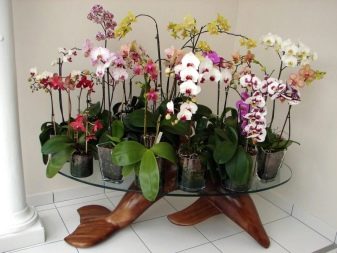
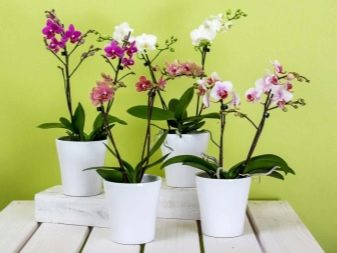
Groups
The orchid has become an almost universally recognized standard of harmony and perfect appearance. It is customary to associate it even with spiritual rebirth. These indoor flowers are traditionally divided into two different groups.
It is customary to call varieties monopodials that have 1 large stem growing vertically upwards. Shoots (pseudobulbs, as they are often called), or sinuses of dense leaves, give flower stalks. The fact is that it is in these structures that the maximum of nutritional components and microelements is grouped. Therefore, they provide stable growth and subsequent flowering of plants.
But orchids growing horizontally belong to the sympodial group. These plants outwardly resemble vines. From the "creeping" parts, shoots develop, rigidly connected to the root complexes. It is the shoots that concentrate moisture and nutrients.
A characteristic feature of the sympodial orchid variety is the faster dying off of thin, narrowed foliage.
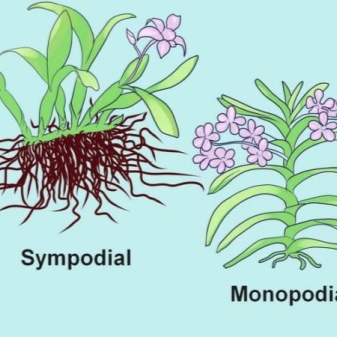
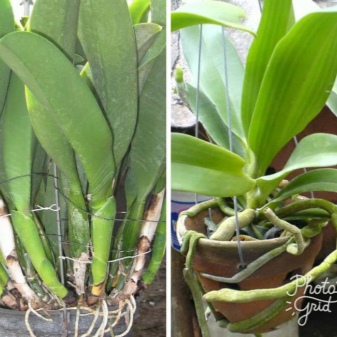
Genus and species
If someone had thought to write a book about orchids, then this would have turned out to be an analogue of the well-known encyclopedic series. One listing of orchid names can take several tens of pages. Moreover, biologists now and then discover new species of this family, and breeders year after year develop new varieties. But don't be scared! After all, very original plants that would deserve exceptional treatment are unlikely to get to "ordinary" flower growers.

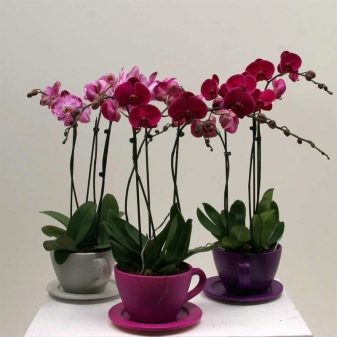
Brassia
Brassia is popular in Russia. This perennial culture comes from South America, but, moreover, it is quite adapted to the domestic open spaces. Under natural conditions, brassia can be seen in the humid forests of the tropical zone. The plant is distinguished by a configuration and tonal foliage that is unusual even for experienced florists. Brazilians usually refer to brassias as "spider orchids".
It should be noted that at least three dozen species are distinguished in this genus. The most popular are the spotted and warty varieties. Domestic flower growers value, first of all, the minimal whimsicality of these crops.
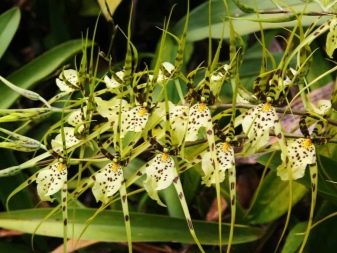
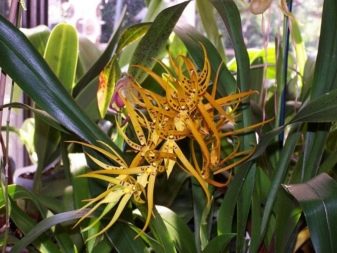
Cambria
The genus Cambrian definitely deserves attention. This group includes many natural species and cultivated hybrids. Cambrian flowers can have different geometries, sizes and even colors. In appearance, it is very easy to imagine that there is nothing in common between them. But in fact, such plants are characterized by strictly sympodial growth. They form oval or rounded pseudobulbs. If the plant has less than 3 pseudobulbs, you cannot buy planting material - it will die anyway.
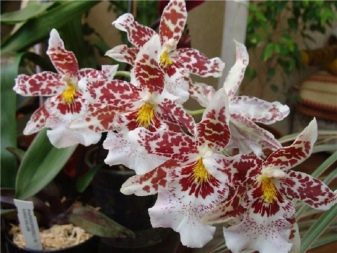

Cattleya
This is a genus of indoor orchids, which are considered one of the most beautiful - both in terms of flowers and leaves. All representatives of the genus (and there are almost 190 of them) are characterized by sympodial development. The plant forms bright flowers of considerable size. The aroma of Cattleya is considered very sophisticated, and the plant itself is colored in all possible tones of the rainbow.
Suffice it to say that Cattleya is sometimes painted in the most incredible colors that seem completely inaccessible to the plant world. There are instances:
- fuchsia colors;
- ruby red tone;
- purple;
- rich orange;
- green;
- white;
- close in color to cinnabar.
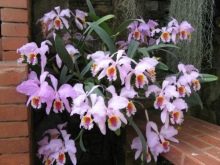
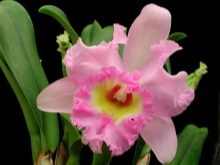
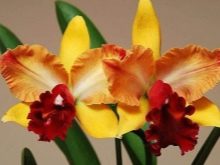
And these are only those colors that most amaze the imagination of flower growers and other people. But there are many other varieties.
It should be borne in mind that Cattleya will bloom only if there are 4 or more bulbs on it.
Cymbidium
This plant deserves a worthy place in any household. Upon acquaintance with the description of ampelous plants of this species, its stunning unpretentiousness attracts attention. The cymbidium orchid variety comes from the mountainous regions of Asia, primarily from Japan. Also, wild species of this group inhabit a number of areas in Australia and Indochina. Cymbidiums are characterized by a unique flowering and a truly expressive aroma.
Mountain orchids form narrow, oblong leaves. Their flowers are relatively small, and they are painted mainly in yellow or brown tones. You can also find cymbidium with:
- cream;
- greenish;
- pink;
- saturated with red colors.
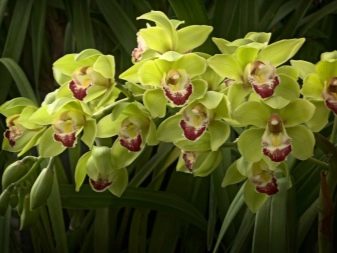
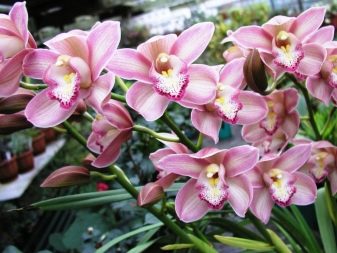
Dendrobium
This genus of orchid is also included in the list of the most beautiful varieties. Such plants are found in Oceania, China, Japan, the Philippines and several other Asian countries. Dendrobiums are concentrated mainly in mountainous areas. However, you can find them in flat areas. The most popular species in this genus are noble and Nobile.
Such crops are very popular in home cultivation. For the most part, dendrobium is a lithophyte. However, there are some species growing on trees. Dendrobium flowers are sometimes extremely similar to wax figures. Bouquet dendrobiums are considered one of the rarest ornamental plants; they grow at altitudes up to 2000 m.
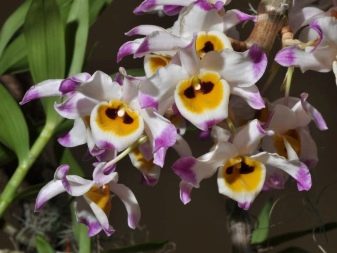
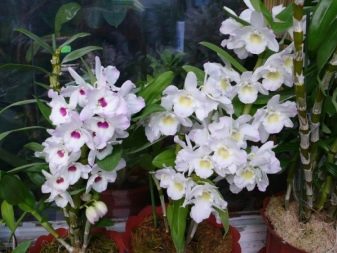
Phalaenopsis
Strictly speaking, phalaenopsis is a type of dendrobium. But for the convenience of classification, this plant is isolated into a separate group. These are impressive lilac or lilac orchids that grow to a large size. Phalaenopsis is extremely popular with Russian and foreign gardeners. The flowers can look like butterflies.
They develop on long, gracefully curving peduncles. Phalaenopsis is also characterized by fleshy elliptical leaves. Depending on the specific species, the color of the flowers can vary from pure white to deep purple tones. In pink phalaenopsis, the buds open at the same time.
Therefore, it is these plants that should be chosen by connoisseurs of extraordinary beauty.


Wanda
When describing the various genera of the orchid family, it is constantly mentioned how beautiful and popular they are. And I must say that this applies to the Wanda family with good reason. Only its "pure" species (excluding hybrids) are now known over fifty. The most attractive and romantic, of course, will be the purple type of orchid. The only problem is that growing any Wanda, especially without experience in floriculture, can be a serious problem.
The very name of the plant is considered to be rooted in Sanskrit. All species in this genus are epiphytes inhabiting rocks or trees. The vanda orchid loves light and, with a lack of it, may not bloom for a long time. For illumination, you can use fluorescent lamps. It is permissible to transfer such an orchid to fresh air only at a temperature of at least 16 degrees around the clock.
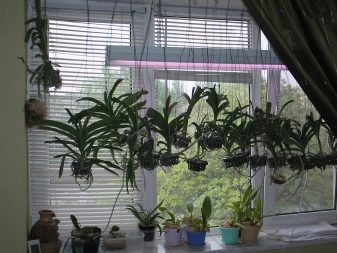
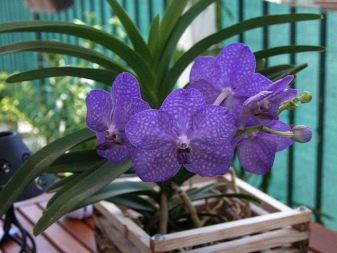
It is gradually adapted to bright sunlight, at first putting it in partial shade. Normal daytime temperatures range from 18 to 30 degrees. At night, the minimum level is 16 degrees. Wanda is grown with a bare root complex. This greatly improves air circulation.
Alternatively, a substrate made from crushed pine bark and a number of impurities is used. Wanda requires an alternation of wet and dry cycles. In any of them, liquid stagnation near the roots should not be allowed. The best irrigation method is a hot shower, which is continued until the roots turn green. You can also apply:
- immersion in water for 30 seconds (the same amount of excess liquid drains);
- watering from a watering can (as carefully as possible);
- spraying from a spray bottle (only for plants with bare roots).
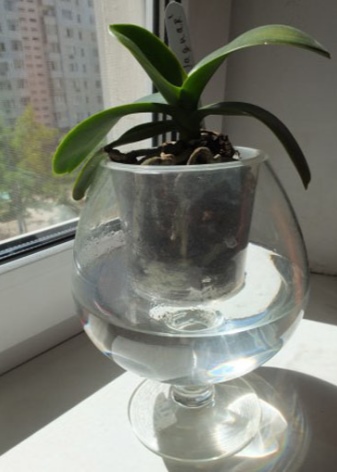

Lycasta
As for the genus lycast, these bush plants produce magnificent flowers. However, neither this nor the intricate ornaments allow us to consider orchids of this kind suitable for potting. The fact is that they are too large for cultivation in a container. They are mainly cultivated in greenhouses or in winter gardens. The wild-growing lycast orchid inhabits the highlands of Mexico.
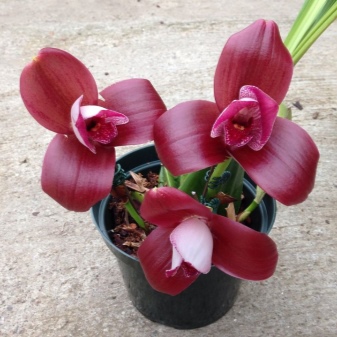

Miltonia
The genus Miltonia contains at least 20 species. This plant has flowers similar in geometry to butterflies. The petals are covered with dewdrops. Miltonia have a wide variety of colors.
Occasionally there are even 2 or more colors, between which strong contrasts are found.
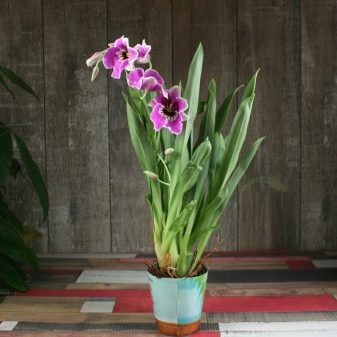
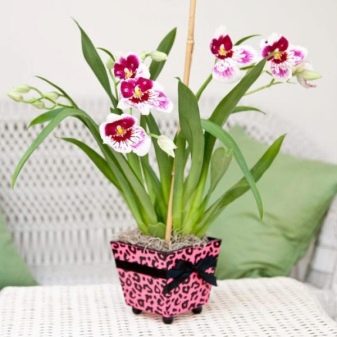
Oncidium
The genus Oncidium stands out for its atypical flower shape. They rather resemble miniature dancing dolls. A yellow tone predominates, which in some cases is diluted with brown or slightly reddish paint. If we are talking not about pure oncidiums, but about hybrids, then you can choose a plant of any color. Oncidium is not too whimsical, but sometimes gardeners have to fight its reluctance to bloom.
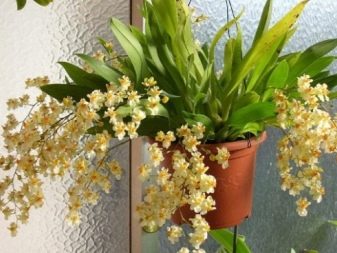
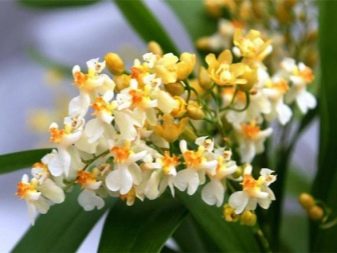
Papiopedilum
As for the papiopedilum genus, it got its name from the similarity of the shape of flowers to women's shoes. The flowers are dense even to the touch and look like they are covered with wax. The colors of papiopedilum orchids can be very different, sometimes they have a light fluff. The foliage of this species is very decorative and is covered with a pattern that resembles precious marble.
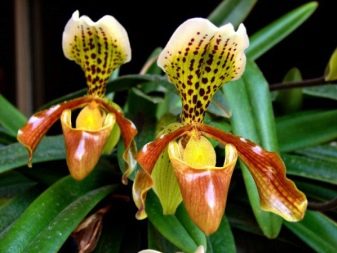
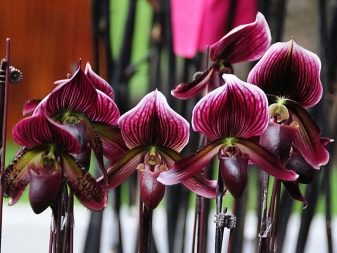
Zygopetalum
The zygopetalum orchid has short, thicker stems at the base. They develop oblong leaves with folds. The flowers, on the other hand, look extremely unusual and are painted in variegated tones. The aroma of zygopetalum is very similar to narcissus. At the same time, a plant of this kind, contrary to its appearance, can be grown without unnecessary problems.


Rinhostilis
The group of rhynchostilis looks amazing and forms small flowers concentrated in inflorescences. The type of inflorescences is similar to the brushes of lilacs. The aroma is no worse. Rhynchostilis develop solid leathery leaves. They grow on a thick stem.
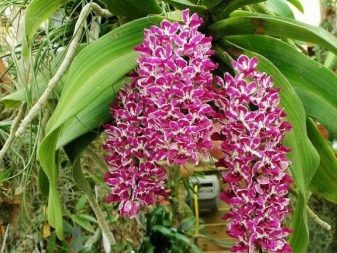
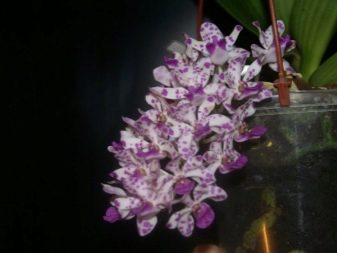
Aganizia
The genus Aganizia is very small in number (now only 4 South American species are known). The plant is relatively low and forms a creeping stem. Only 2 varieties - blue and beautiful, are cultivated in pots. Peduncles are relatively short, their length is only 0.15 m. On 1 peduncle, 2, 3, 4 or 5 graceful flowers develop.
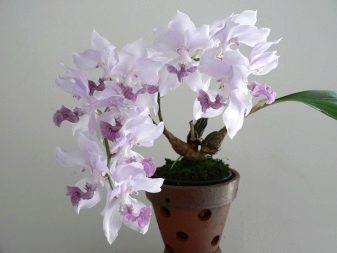
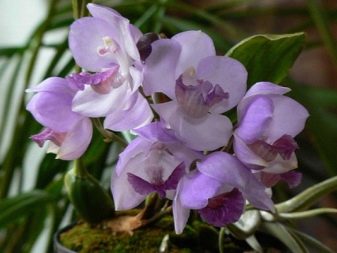
Ludisia
Ludisia is found in the humid tropical zone. This genus can be found in China and Vietnam, Malaysia. Ludisia is also sometimes found in Sumatra. The plant is characterized by a purple or olive color.
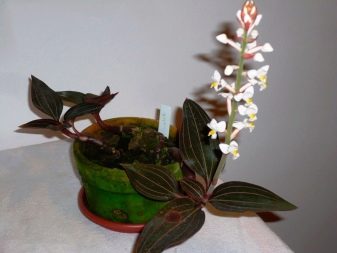
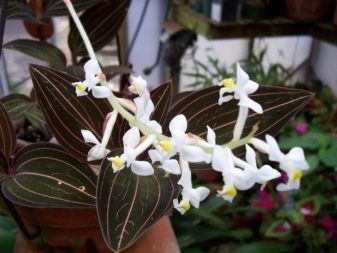
Angrekum
Angrekum is a type of orchid that produces attractive-looking flowers. Their tonality is very different: there are both purely snow-white and ivory-colored specimens. In both cases, a subtle, pleasant aroma is characteristic. "Angrekum" does not lend itself to growing at home. It can only be cultivated outside Madagascar in greenhouses.
However, if you still create attractive conditions, you can achieve three blooms during the year.
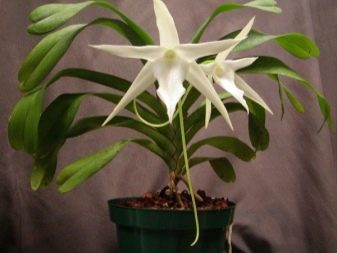
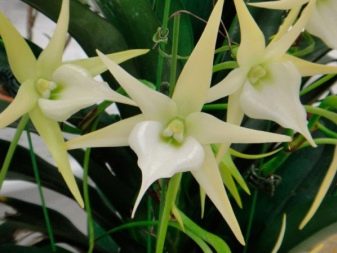
Ghost
Of the varieties, the "Ghost" deserves attention. A very attractive feature of this plant is its extraordinary aroma. The name of the species is not associated with any mystical features.The fact is that such orchids unexpectedly, as if out of nowhere, appear in sight of travelers walking through the rainforest. Moreover, they are painted in a dull white color.
According to the shape of the flowers, the "Ghost" received an alternative name for the frog orchid. 2 side petals are long, and in configuration they are similar to frog legs. The root system is thick and smooth. The main part of the "Ghost" is gray-green, only the growing tips are characterized by a pure green color.
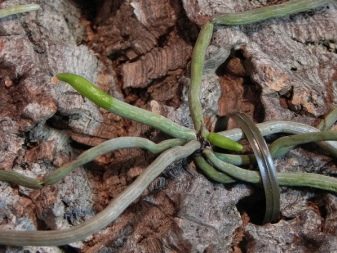
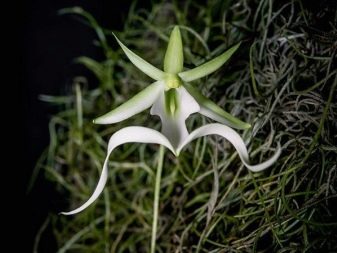
An interesting feature of this species is that the roots have the functions that foliage takes on in other plants. For a very long time, the plant was considered to have disappeared from the face of the earth. But in the last years of the twentieth century, new expeditions managed to refute this opinion. Moreover, the "Ghost" has been successfully introduced into the culture as an attractive ornamental plant. This species was found first of all in Cuba; in nature, it inhabits swampy areas.
Newly appeared sprouts of "Ghosts" contain 1, rarely 2 roots. Flowers develop one at a time per peduncle; they give off an apple flavor. The transverse diameter of the flower is 0.04 m, while the gap from the upper to the lower petals can reach 0.12-0.13 m. The spur 0.12 m long is abundantly filled with nectar. For pollination in nature, the "Ghost" needs moths and daytime insects "sailboats".
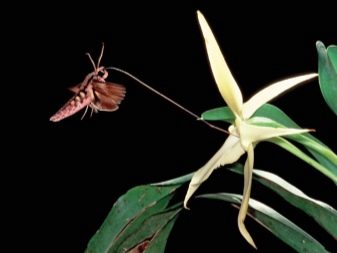
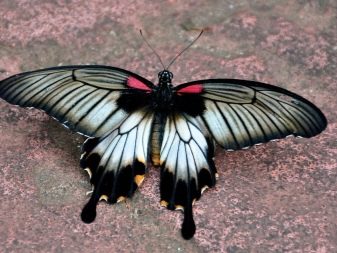
Expecting a plant to bloom every season is somewhat naive. In nature, even under favorable conditions, this is not the case. Most often, flowering occurs in June, July or August. Its usual duration is 21-28 days. For the "Ghost" to bloom, humidity is required at least 75% and a significant difference between day and night air temperatures (10 or 11 degrees).
It is possible to grow a culture only if it is possible to remove the orchid from the tree trunk along with a piece of bark, with moss and with all the substrate. If disturbed, the more damaged, the root system will have a very bad effect on the plant. The workpiece is rigidly fixed and placed in a special container, where bark and sphagnum are also added. For the normal development of "Ghosts" you need:
- diffused backlight;
- humidity about 80%;
- periodic (but not too frequent and weak!) ventilation.
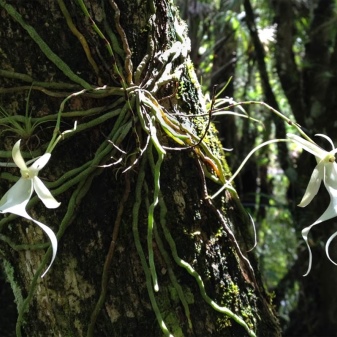

It is imperative to exclude the slightest frost on the orchid.
When the warm season comes, they withstand temperatures from 30 to 33 degrees during the day, and from 20 to 23 degrees at night. In winter, as soon as the plant enters the resting phase, during the day the air should be warmed up to 25 degrees. At night, this figure is 12 degrees. For irrigation, it is recommended to use melt or rain water once a week; if for some reason this is not possible, use soft distilled water.
Both overflow and overdrying of the roots are unacceptable. It is required to keep them wet at all times, but not excessively wet; otherwise, success cannot be achieved. As for the diseases of the "Ghost", they are practically not studied. Therefore, it makes sense to take up the cultivation of this culture only for trained flower growers with great experience. And even they are extremely at risk of not achieving a positive result.
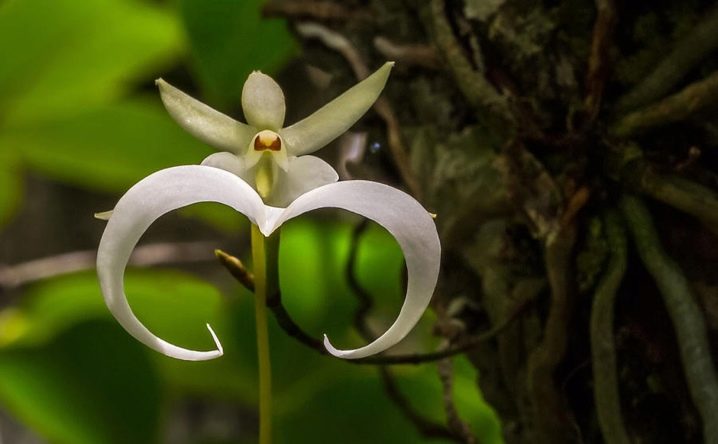
Cleopatra
"Cleopatra" is a species that is distinguished by its majestic and beautiful appearance among other phalaenopsis. The high quality of such a crop is at least confirmed by the fact that it is one of the most popular potted plants on the planet. "Cleopatra" was bred artificially, and the main efforts of breeders were aimed at making it easier to grow a flower. Experts managed to solve many problems that did not allow orchids to be cultivated at home for a long time.
An important feature of "Cleopatra" is its pronounced originality. It is simply impossible to find two plants of this type that were completely similar to each other. Differences may relate to:
- colors;
- speck geometry;
- the size of the flowers.
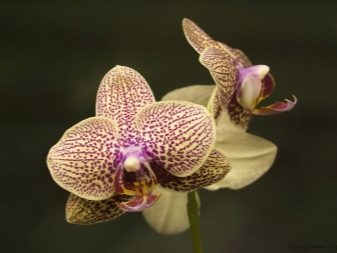

If we also take into account the effect of changing lighting, it becomes clear that there are actually much more options. Most often, this type of orchid forms a white or white with yellow tone. At first, when the bloom is just unfolding, the orchid is painted in rich colors. Gradually, it will fade and lose its former brightness. In any case, the plant has an intricate speck pattern.
By its type, "Cleopatra" refers to epiphytes. Height reaches 0.6-0.7 m. One plant can have 3-7 leaves of thick green color. The length of one leaf is 0.1-0.3 m. The foliage is collected in rosettes, from which rather long (up to 0.7 m) peduncles develop. The emergence of new leaves occurs every 4-8 months.
The Cleopatra bloom can occur in any season. But it mostly happens in the first half of the year. 1 inflorescence has an average of 10 round flowers. Their diameter is 0.05-0.08 m.
For the sometimes encountered geometry, the flowers of this plant were nicknamed "butterflies".
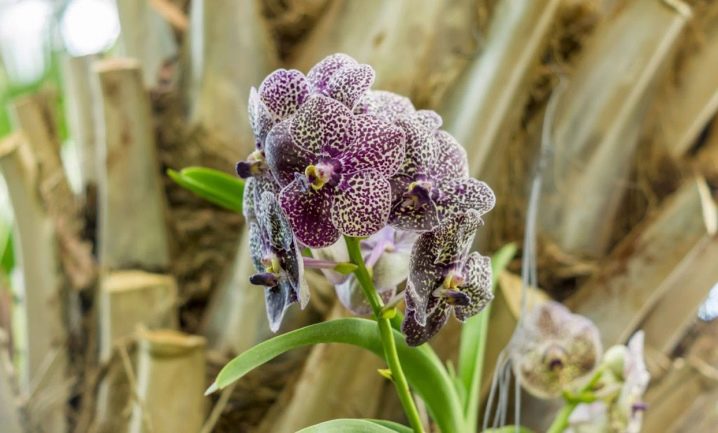
This mutation is highly regarded by orchid breeders and garden flower lovers. But you need to understand that the next flowering may look simple and everyday ... how these words are applicable to orchid flowering. But the flowers will keep very stable, sometimes up to 6 months. When the lower tier of buds falls off, the new ones at the top will still bloom. Faded stalks of "Cleopatra" cannot be cut off, because they may continue to grow unpredictably.
If the culture has not yet entered the dormant stage, favorable conditions can cause it to bloom again. But as for other representatives of the glorious family, this is possible only with a serious difference in temperature between day and night. It is also required to allow the plant to be dormant. When "Cleopatra" does not want to bloom for a long time, it should be encouraged by placing it in a room where the temperature is about 15 degrees for 30-60 days. Such an adventure will definitely lead to the ejection of peduncles.
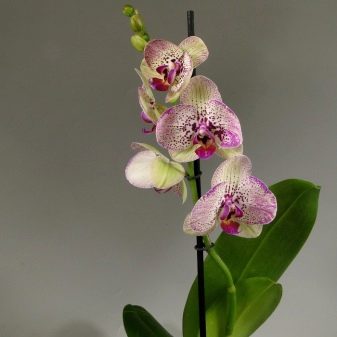
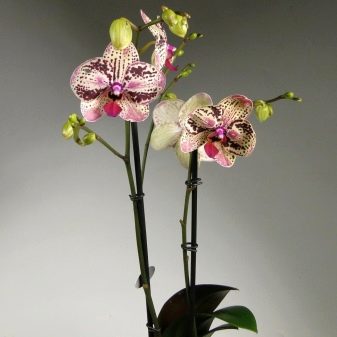
It thrives best on a well-lit, but not overheated windowsill. In winter, this role can be played by a window facing west, east and sometimes even south. During the summer months, direct sunlight can burn Cleopatra's leaves. Therefore, it is imperative to shade the plant. Watering is done only in the morning.
If the heat is intense, you need to water the orchid every 3 days. In winter, the intervals between waterings cannot be less than 7 days. In order not to risk, immerse the pots in water for 10 minutes, trying to wet the entire bark at once. Next, the plant is removed, the liquid is allowed to drain and the flower is returned to its original place. For top dressing, only specialized fertilizers are used and they are applied strictly to a moistened substrate.
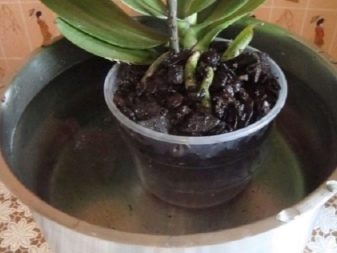
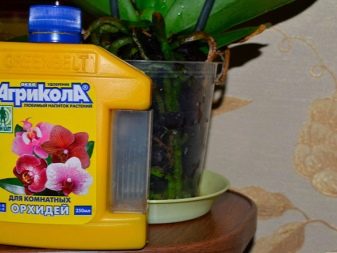
"Cleopatra" even better tolerates nutritional deficiencies than excessive amounts. Disease can be avoided if:
- eliminate the impact of drafts;
- limit hydration;
- exclude stagnation of liquid in flower outlets.
For phalaenopsis, a soil in the form of bark mixed with charcoal and moss is recommended. It is not difficult to get such a mixture in a regular flower shop. "Cleopatra" does not feel well in a spacious pot. The reservoir must be selected so that it only contains all the roots. At the same time, about 50% of the space is left so that the root system can grow freely.
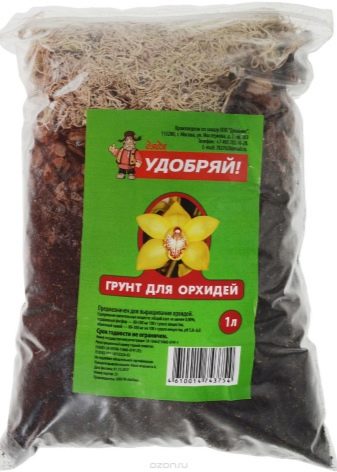

The plant will have to be transplanted every 2 or 3 years.
Otherwise, depletion of the substrate can harm it. It is highly undesirable to transplant a flowering specimen. But sometimes there is no other choice. This is usually due to:
- an acute shortage of space (the root system came out or began to break the pot);
- the appearance of root or leaf rot;
- damage by pests;
- detection of various stains, deposits, crusts;
- lethargy of leaves, their rapid fall.
Both with normal and unscheduled transplantation, it is required to inspect the plant, get rid of all dry and rotten roots. Sections are treated with cinnamon powder or other disinfecting compounds. After placing the flower in the pot, you need to put the supports. When filling the bark, the container is periodically shaken so that the pieces fill all the voids that appear. Watering a newly transplanted orchid should not be done, since all inevitable damage must first heal.

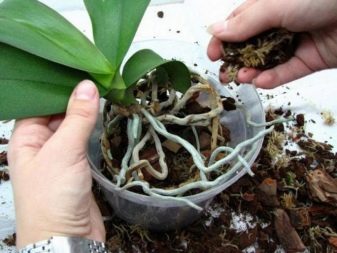
Manhattan
The Manhattan variety is also considered a very good choice. It should be borne in mind, however, that this hybrid was not registered anywhere in the official classifiers. Each company therefore has the full right to sell anything under this name, as well as change the name itself. But still, in most cases, traders prefer to sell it under the Manhattan Phalaenopsis brand.
Most often, the plant is distinguished by delicate pink, bright yellow or orange tones. Under normal conditions, the leaves seem to be strewn with specks. But with a lack of sunlight, these specks can disappear. The plant forms stems developing directly. They can gracefully bend over and hold 10-14 flowers. The color of each flower is very original; it depends on the actual conditions and the light level.
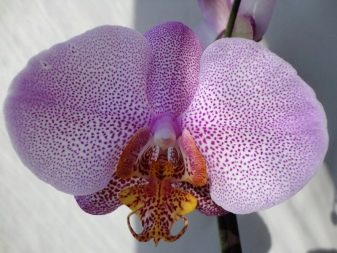
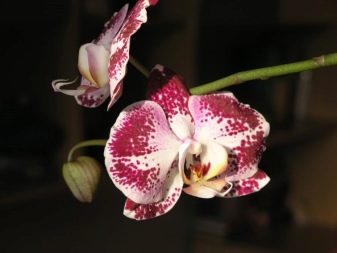
The Manhattan arrows branch very well. Therefore, flowering lasts a long time and new buds appear all the time. The root complex of this variety develops very well. An abundant layer of velamen forms on the aerial roots. Peduncles in adult specimens of "Manhattan" can reach 0.55-0.6 m.
The plant is covered with oval foliage. The individual leaves look like inverted eggs. Graceful dark blotches, if the lighting is good, can even look like a marbled pattern. Adult Manhattans have 3-6 leaves. The leaf plate reaches 0.2 m in length, while its width ranges from 0.05 to 0.08 m.
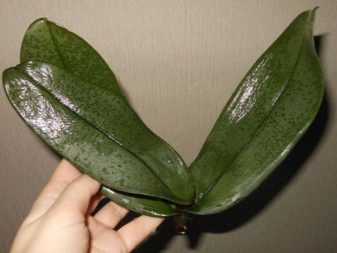
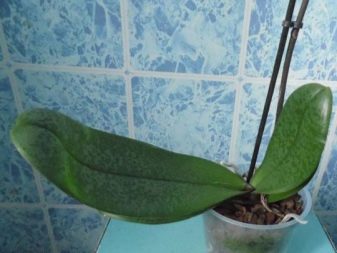
The flowers have a geometry typical of Phalaenopsis. They are sometimes called fluttering moths. And the structure of the flower is by no means exotic: 3 sepals correspond to 3 petals.
The diameter of flowers in "Manhattan" is an average of 0.08 m.
There is no specific rest period. However, it is not necessary to achieve flowering of very young specimens. They must first accumulate energy and strengthen themselves in general. The probability of re-flowering is determined by the flowering arrow. If it dries up 100%, the dormant kidney, of course, will not come to life again.
With illiterate care and poor conditions of detention, you can be afraid of long breaks in flowering. To eliminate this problem, you need to take care of the backlight. She will make up for the lack of illumination; for this, the duration of the general lighting is adjusted to 12 hours a day. You will have to use only specialized phytolamps. Conventional incandescent bulbs and other household light sources will not work.
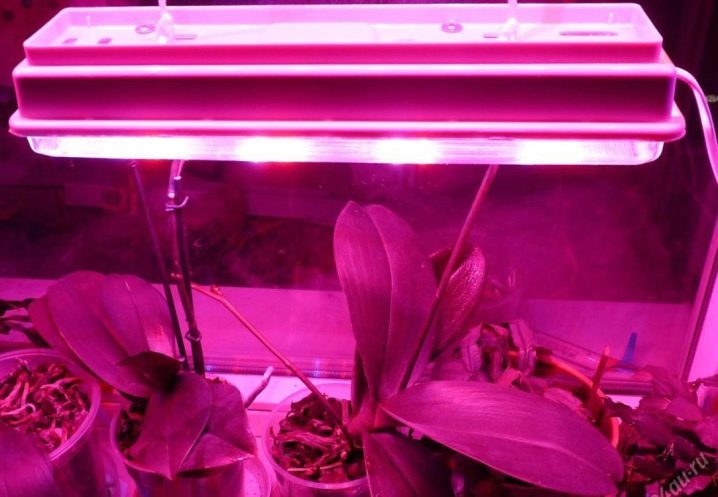
Direct sunlight is categorically unacceptable. Temperature and illumination must be kept at exactly the same level. Deviations in both directions can be extremely bad for the plant. Manhattans require weekly watering throughout the spring and summer. Experienced flower growers advise using warm water, neutral in acidity. Better yet, use melt or rainwater (just not collected from a steel roof!). In autumn and in the cold season, the intensity of irrigation is reduced by 1.5-2 times. Top dressing is used monthly or every two waterings for the third time. In this case, the instructions for the use of certain fertilizers should be strictly observed. Sometimes it is worth completely reducing the amount of dressings by 50-75% in comparison with the recommended amount.
If the arrow dries up after the flowers fall, you must wait until this process is completed. Only completely dried peduncles should be cut off.If, after the flowers have fallen, the development of the arrow has stopped, or it has not dried up, or has dried up only partially, it remains only to wait. It is very likely that "Manhattan" will then please the owners with one more flower on this peduncle. The transplant is usually done in the second or third year of development.
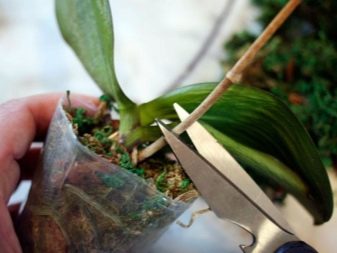
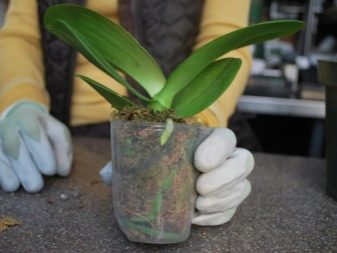
Vanilla
The Vanilla Orchid produces seeds that are exactly the same vanilla that housewives are familiar with. This genus is highly ramified and includes up to 100 species. However, only 2 of them are directly related to vanilla. The culture originates from the central part of the American continent. But its valuable properties have led to a much wider distribution.
Indoor "Vanilla" does not bear fruit.
So plans for homemade spice production will have to say goodbye. But in the beauty of flowering, it may well compete with any other orchid. Flowers painted in snow-white, yellow or light green tones look gentle. They stay on the peduncle for a maximum of 24 hours. However, due to the large number of buds, the total flowering time can reach several weeks. Even outwardly, "Vanilla" differs from other orchids, since it is not a bush, but a liana. At the same time, aerial roots and dense green leaves common to the entire family are still present. There is no need to wait for a strong growth of the vine. From time to time, pruning is carried out, which improves the condition of the orchid.
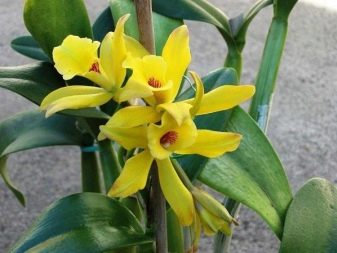
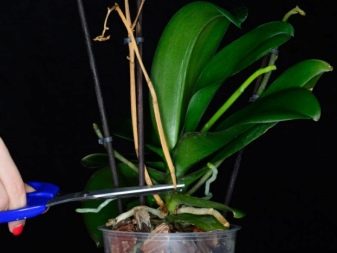
Vanilla is growing rapidly. Stable supports are very important for her. They are best made from coconut fiber. With proper care, even for very modest cuttings, you can get a full-fledged vine for the third season. The optimum temperature for her is 25-30 degrees, which should be maintained year-round. The air should not be allowed to cool to less than 18 degrees Celsius.
Humidity must be maintained between 80 and 90%. This indicator can be maintained through regular watering and the most frequent spraying. In both cases, only warm water is used. When the temperature rises, watering and spraying is activated. "Vanilla" loves light, but it should fall absent-mindedly.
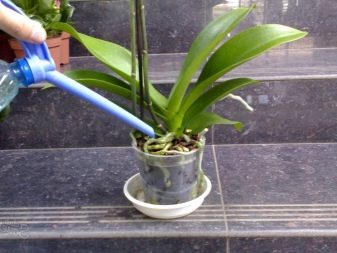
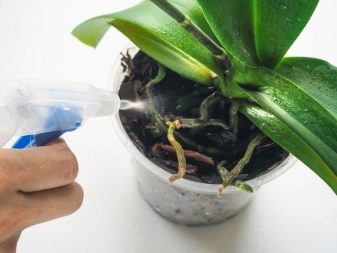
You can grow this culture using an earthen mixture, but not the one that is needed for epiphytes. The optimal composition includes:
- fern roots;
- bark of conifers;
- charcoal;
- sphagnum;
- disinfected soil from the garden.
Having prepared the soil mixture, you need to make sure that it allows air and water to pass through. Looseness and lightness are other important requirements. You need to transplant "Vanilla" every 2 or 3 years. It should be borne in mind that transplanting can slow down the growth of the plant. If the roots are broken when removing the plant from the pot, they are immediately sprinkled with crushed coal.

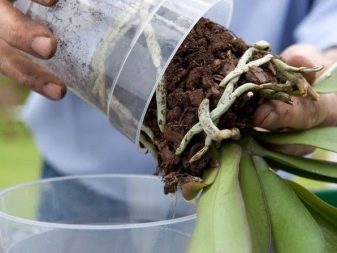
Propagation "Vanilla" is recommended by cuttings. To speed up the rooting of the cutting, planting material with air roots is selected. Special stimulants will provide additional help. Heteroauxin is deservedly considered the best among them. The liana planted in the earthen mixture is immediately covered with a plastic bag.
The seedling under the hood is regularly ventilated. It is also required to continuously provide light moisture in the soil. As soon as the vine resumes development, the package is immediately removed. Despite the apparent difficulty in handling, "Vanilla" deserves a lot of attention.
Diligent growers will get a very impressive result.
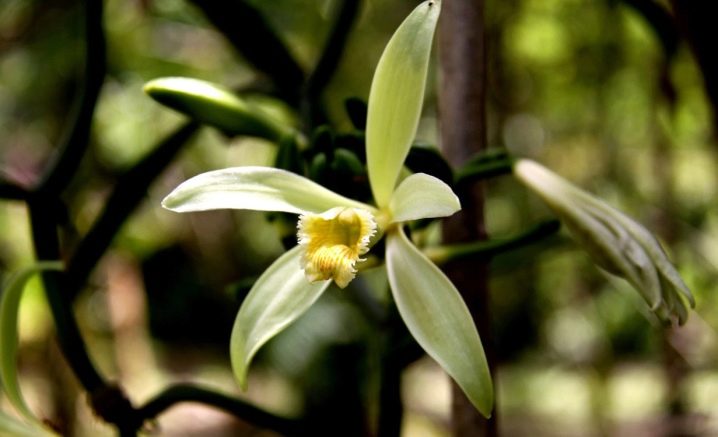
Lelia
Large-flowered, very graceful Lelia orchid stands out for its spectacular appearance. The graceful plant is painted in a variety of shades of lilac-pink. Compared to the more popular types, the culture looks, if not too saturated, but just pleasant to look at. The group of laelias includes both large and modest plants. Their appearance can be chosen to suit your taste, while Lelia's capriciousness is exaggerated.
Laelia and Cattleya should not be confused. They are mixed partly due to breeding successes, partly due to illiterate compilation of catalogs.The natural range of this genus covers Central and South America. In most cases, laelias grow on the ground, more precisely, on a rock or an open stone outlet. But there are also some epiphytes.

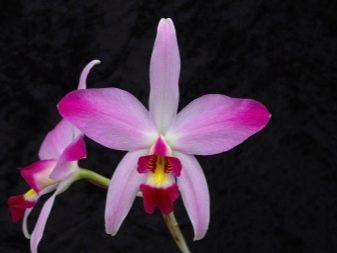
Plants are very sensitive to soil composition. The development of laelias follows a sympodial scheme. Pseudobulbs can outwardly resemble:
- spindle;
- cylinder;
- stem (but this is very rare).
Bulbs are located very tightly. Often 1 - 2 leaves come out of them. The size of laelia is determined by its specific type. The smallest varieties do not rise above 0.1 m. The most powerful types rise 0.5 m or more.
Laelias develop extremely hard, leathery foliage. It can be linear or lanceolate. If you use a large enough pot, the plant will look quite attractive. Each laelia blooms only in winter. The size of the flowers reaches 0.2 m.
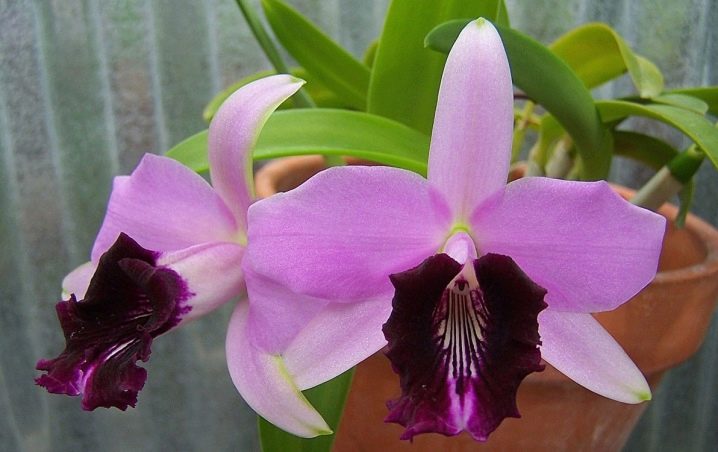
Lelia "Gulda" is an epiphyte with short roots. It forms oblong ribbed pseudobulbs. The plant produces 1-3 linear leaves 0.2 m long. The height of the peduncles reaches 0.75 m. A brush is formed on the peduncle, which includes 3-9 flowers, the diameter of which does not exceed 0.1 m. Lelia "Gulda" is not just graceful, she it also emits a powerful aroma. It blooms mainly in the middle of winter.
Another epiphyte is double-edged laelia. It has flat pseudobulbs with 4 faces. Single leaves of rather large width emerge from them. The petals are painted in a pink-lilac tone, the same color is typical for sepals. The flowering time also comes in the middle of winter.
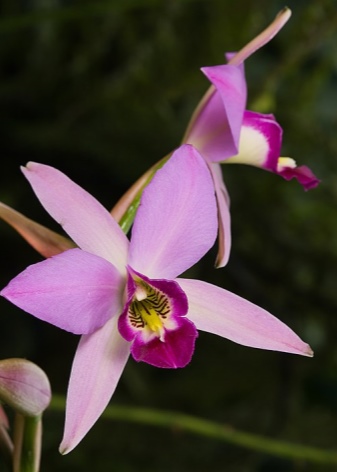
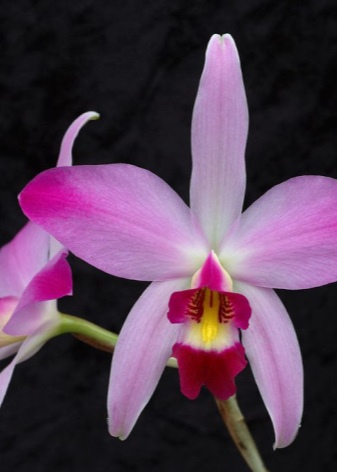
Purple Laelia is a large plant with club-like stems. They are crowned with hard leaves, like a tongue. The length of the leaf can reach 0.3 m. Upright peduncles have a kind of "cover". Each peduncle is crowned with a cluster of exceptionally large flowers. The plant emits a pronounced pleasant aroma. Indoor Laelias are not very popular and are grown less frequently than other orchids.
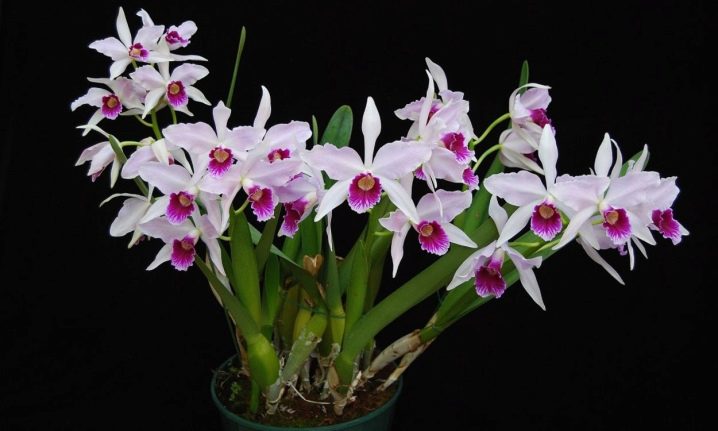
The fact is that these plants cannot be classified as "easy to grow" in any way.
Only after gaining solid experience, you can try to grow Lelia. Otherwise, unless your efforts and time will be wasted. Additional lighting is imperative. It is best to organize:
- a greenhouse with tropical conditions;
- florarium;
- orchidarium;
- as a last resort, a simple floral display case.
The slightest shading is extremely bad for the laelias. At the same time, it is very important for them to receive scattered sunlight. Of course, in the conditions of the Russian climate, it is impossible to do without additional lighting in winter. Even when the plant is placed on the southern windows. With the help of phytolamps, it is necessary to bring the duration of daylight hours to 10 hours (no longer necessary).


Only the tiny and purple varieties require year-round air temperatures in the 21-28 degrees Celsius range. Any other varieties of laelias, including hybrids, value cool rooms more. It should be remembered that this category of orchids strongly requires a constant supply of fresh air. The slightest stagnation turns into very unpleasant consequences. You can safely put a lelia even near a slightly open window.
And in the summer months, it is sometimes rearranged in the open air during the day. Of course, the most protected areas are selected. Both frost-resistant and thermophilic laelias often need a very specific approach. Working correctly with them, you can get a brilliant result in any case. And there is no need to be afraid of any difficulties: in general, caring for this plant is slightly more difficult than for phalaenopsis.
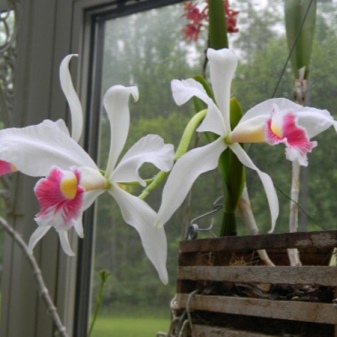
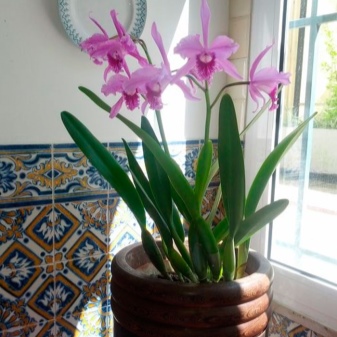
Bulbophyllum
Bulbophyllum also deserves the attention of florists. This genus includes over 190 species of orchids. In nature, they inhabit tropical and subtropical regions. A characteristic feature of the genus is that its representatives can look completely unpredictable.It is sometimes impossible to guess that there is something in common between them, even the size is significantly different.
Bulbophyllum can develop both single buds and inflorescences in the form of a panicle. The size of individual flowers is sometimes very different. Their coloring is very diverse, there are also options with bitmaps. However, it is worthwhile to carefully understand before giving preference to a particular type of bulbophyllum. The fact is that some plants of this group emit extremely unpleasant odors.
If the choice is made correctly, it will not be difficult to grow such an orchid.
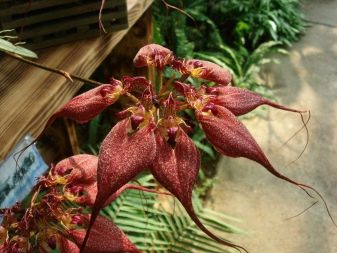
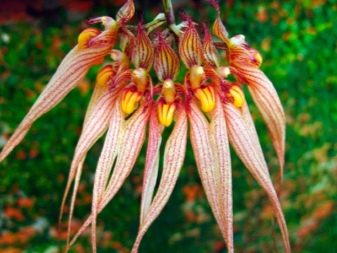
Lobba
The Lobb species was named after the discoverer (English explorer Thomas Lobb). The plant is found in the tropical zone of India, Thailand and Burma. Outside of mainland Asia - Sumatra and the Philippines. The size of the Lobb orchid is average (with a height of up to 0.3 m). The peduncle is up to 0.1 m long. Each of the peduncles acts as a support for a single flower 0.07-0.1 m in size. The petals are painted in yellow-orange tones. Bulbophyllum jellyfish has dark green leaves of increased density.
Long peduncle "jellyfish" is a support for more than a dozen buds. Their opening happens at the same time, the appearance resembles some kind of tentacles (hence the name). Flowering can occur in any season. The jellyfish's petals are white. It is diluted with reddish or orange areas.

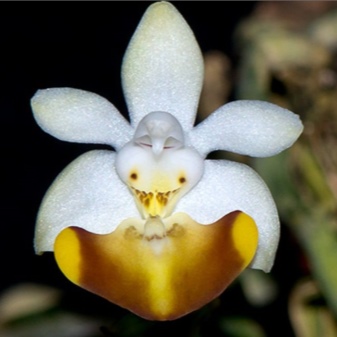
Echinolabium
Echinolabium is a purely Indonesian variety of sympodial orchids. The peduncle of this plant can reach 0.7 m in length. The buds appear gradually. There are 1-3 flowers per peduncle. Their petals are colored pinkish or scarlet.
Echinolabiums are the largest among all bulbophyllums (if we compare only the size of the flowers). On the territory of Vietnam and China, the creeping epiphyte bulbophyllum ragweed is found. The height of such an orchid does not exceed 0.22 m. It is characterized by elongated leathery-type leaves. Each peduncle gives 1 small (no more than 0.015 m) flower. Ambrosia sepals are purple-red in color. It is diluted with stripes running along. The petals are relatively light; flowering continues (in nature) from the last part of autumn to early spring).
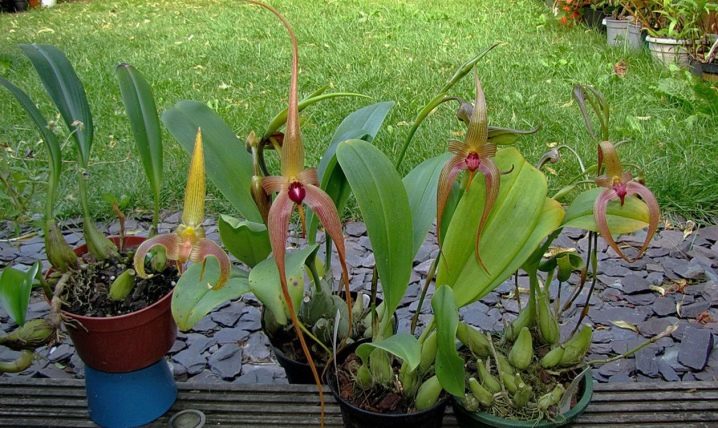
Magic art
Fairly popular, in comparison with bulbophyllums, has "Magic Art". This plant is one of the phalaenopsis, but it deserves a separate analysis. Its height is 0.65 m. The diameter of the pot during the initial cultivation is 0.12 m. The plant requires bright, albeit diffused, lighting.
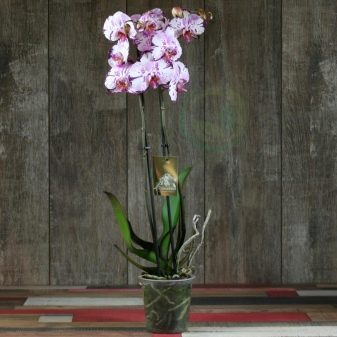
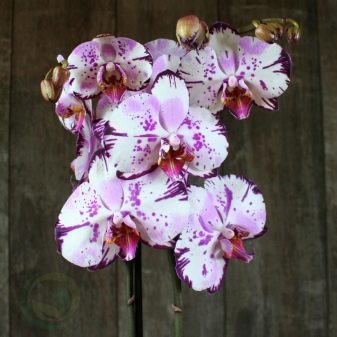
Liodora
Liodora can also be of great benefit to the household. It is a strong-smelling variety of Phalaenopsis. It is generally accepted that the variety was bred in the early 1980s. It was developed in the USA. Already in the first years of its use, the plant has received many different awards. And it gained popularity very quickly. The demand for a hybrid was associated with the appearance of flowers and the aroma of culture.
The range of the wild-growing "Liodora" covers the tropical regions of Malaysia, the northern coast of Australia.
You can also meet the species in China. Anywhere else, despite a thorough search for many years, it was not possible to find it. The stem is among the medium hybrids with a height of up to 0.7 m. The foliage is located on both sides of the stem, the length of the leaf can be 0.25 m, and the width is 0.12 m.
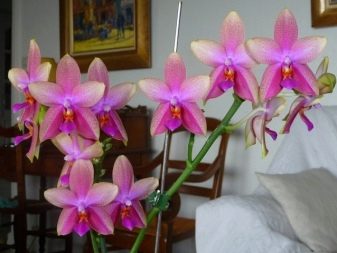
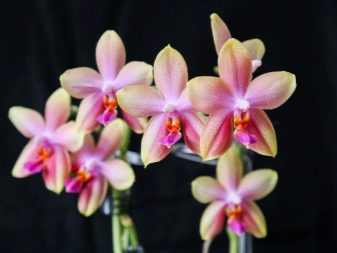
The leaves are characterized by a wavy edge. The leaf plates are colored deep green. The arrow reaches a medium size, and during flowering it continues to develop. The maximum length of the peduncle sometimes reaches 0.5 m. If the plant is provided with optimal conditions, it can bloom continuously for up to 2 years.
There is simply no need for a rest period. Immediately after flowering and drying of the peduncle, the development of a new arrow can begin.The norm for a plant is the emergence of several peduncles from the stem, only one of which continues to grow. Usually the arrows are removed after flowering to stimulate the development of a new arrow. But this is optional.
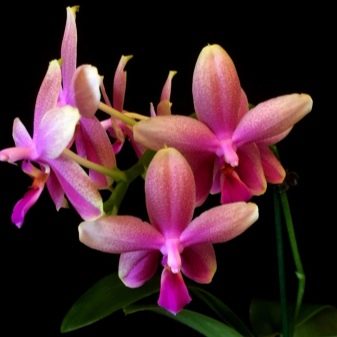
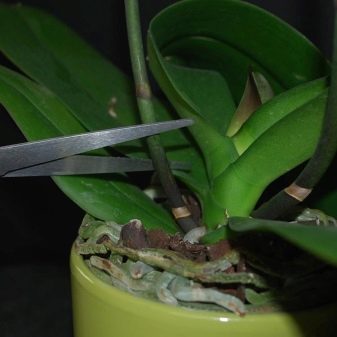
Regular flowering is achieved with strict adherence to the rules of care and with the introduction of systematic dressings. It is advised to grow the culture in transparent plastic pots. But you can also use ordinary ceramic containers. It is necessary to transplant the stem when the soil substrate is compacted. This is usually done every 2-3 years.
It is advised to carry out this procedure immediately after flowering is complete. When growing "Liodora" on blocks, it is advisable to spread a little sphagnum between the roots. With the help of moss, they ensure long-term moisture retention. This type of orchid can bloom normally if the air temperature is 25-30 degrees during the day and 15-20 degrees at night. Humidity in the region of 50% is optimal, since lower and higher values still affect the plant badly.
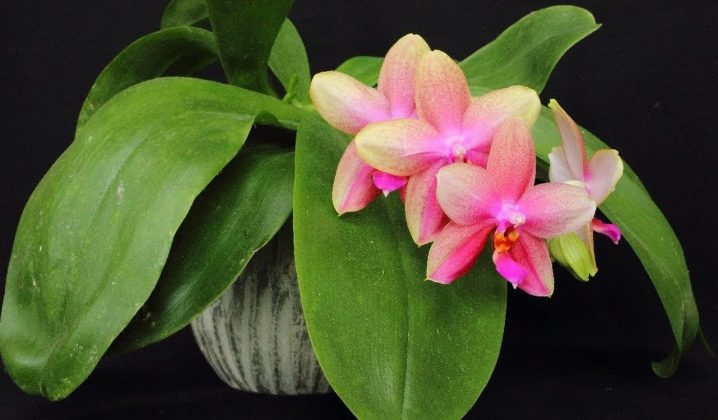
Rare varieties
These varieties are therefore called rare because, due to the special difficulties in care, they can rarely be found in flower beds. However, all collectors try to get hold of just such species, as they are very beautiful and graceful. A striking example is the sky blue sun orchids. Dissolution of flowers occurs only in warm weather. The leaves of this species are distinguished by an attractive dark green color, which goes well with the blueness of the petals.
The sky blue orchid blooms in October, November and December. The Lady's Yellow-Purple Slippers are traditionally believed to be the achievement of British breeding. But at the same time, the plant can be found in other European countries. The advantage of the plant is the combination of an atypical form with a rare combination of yellow and purple colors.
It is non-standard even in the whole plant world, not to mention orchids.
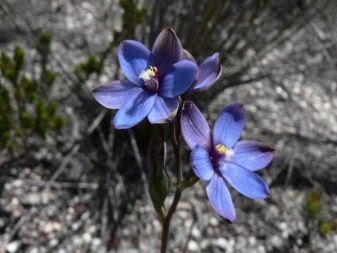
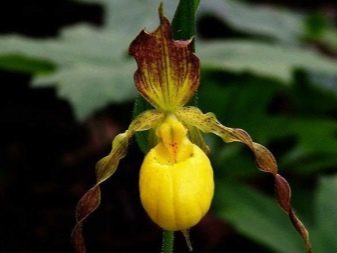
The downside to this view is that it is incredibly expensive. Moreover, English laws protect the plant from export. Due to security legislation, it is impossible to purchase the Three Birds Orchid. Its natural range is North America, primarily the American state of New England. Moreover, even if you manage to purchase "Three Birds", the chances of enjoying the orchid bloom are small.
The species that grows in the Philippines and one of the Indonesian provinces was named "bull orchid" for its atypical geometry of petals. They curl intricately and as a result resemble just the horns of a mighty animal. The color of the petals combines white and purple tones. The diameter of the flowers can be up to 0.065 m. The flowering period coincides with the onset of calendar spring.

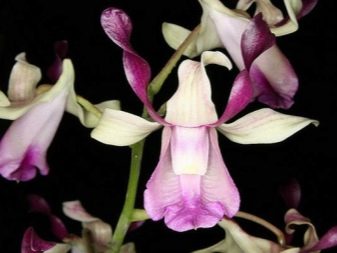
The "mouth of the dragon" naturally grows in swamps in the USA and Canada. But the chances of finding it there are very small, since the species is rare. The main color of the petals is purple (although there are also crimson specimens). One petal is always hung down from the bud. It is he who is associated with "language".
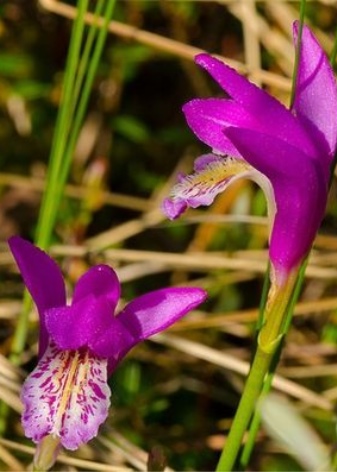
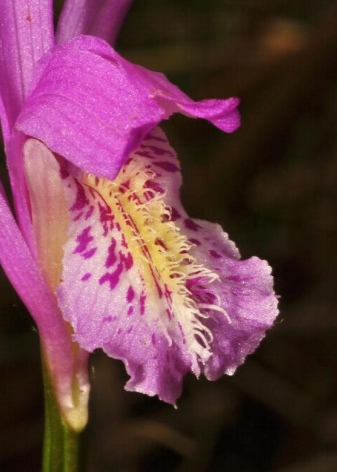
Variations in shapes
Orchid petals can be of almost any color. So far, only blue is not found. The Golden Orchid, due to its unusual appearance, costs about the same as the advanced SUVs. The natural area is limited to the Malaysian Mount Kinabalu. There the plant blooms no earlier than 15 years of development.
Silver orchids from the genus Cymbidium, for their beauty, even got on one of the coins issued in Singapore. The genus of orchids Dracula includes over 120 species. They all have hairy outgrowths. But the popularity of this plant among home growers is low. But the number of new subtypes of Siberian orchids is rapidly increasing.
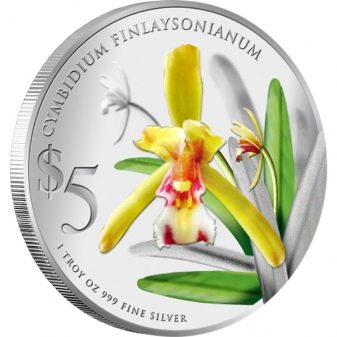

Orchid "Nest" stands out even among the listed varieties. Not surprisingly, it has brown stems and flowers. The appearance of the plant repels someone, but some people like it.
Of the standard plants, many consider varieties with cascading flowering to be attractive. The varieties with lemon flowers are definitely worthy of respect. Among these types, there are mainly tall plants. However, if you wish, you can also find lemon dwarfs.
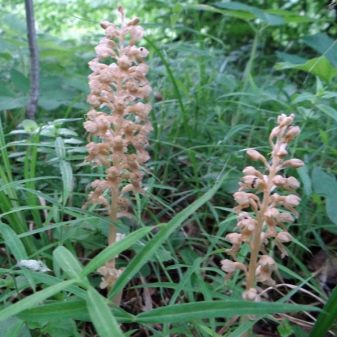
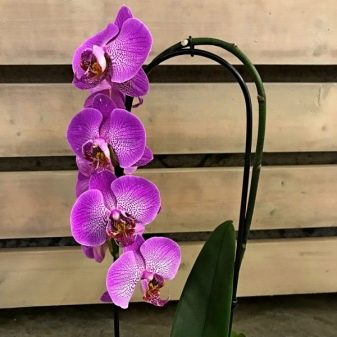
Some gardeners prefer ampelous orchids. Returning to standard crops, it is worth emphasizing the grace of variegated varieties.
They have a variegated color not only flowers, but also leaves.
Panda Orchid does not exceed 0.3 m in height. It can be grown in a pot with a diameter of 0.09 m. Regardless of the specific variety, absolutely all orchids have a column. So called accrete pistils and stamens. Any kind of this plant can be easily imitated with artificial flowers.
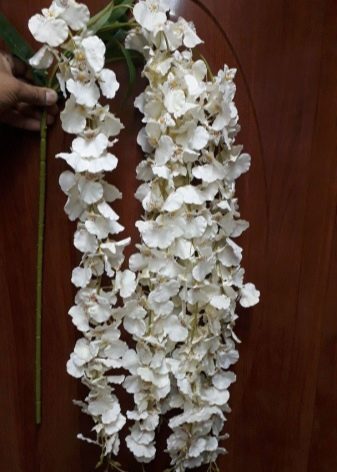
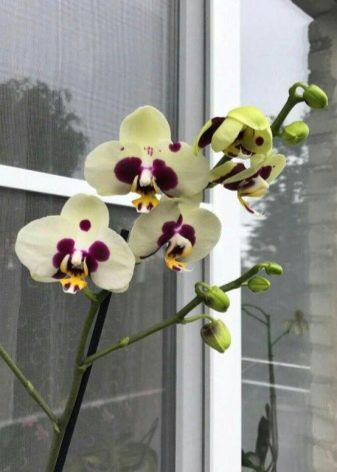
For the types and varieties of orchids, see the next video.































The comment was sent successfully.